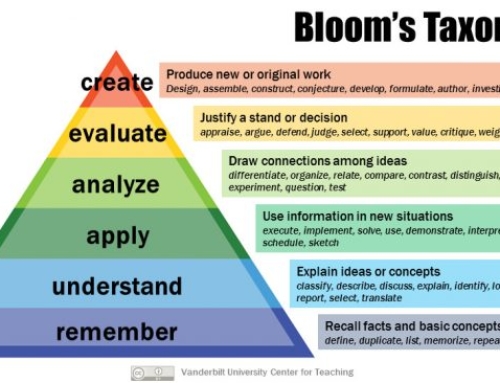
Thank you for being a friend: Checking for Understanding in the Tiered Reading Classroom
by Melody K. Gerard
Let me tell you a story. Picture it. Sicily. 1922. Classes were 90 minutes long. Formative assessments were taken once every six weeks. Summative assessments were once a year. Test scores were always a surprise.
If you didn’t catch that reference, it’s an allusion to Golden Girls. If you’re unfamiliar with Golden Girls, stop reading, upgrade your life, then come back.
So, maybe this didn’t happen in Sicily. And, yeah, the year is 2018. But there is one thing about that story that isn’t a spun yarn from Sophia Petrillo?
When it comes to using data for learning, many of us still have problems to work out.
As a third-year instructional coach and teacher development specialist for one of the largest school districts in the United States of America, I often find myself in professional learning community (PLC) meetings, department data meetings, and administrative debriefs. These are all golden opportunities to use data to inform instruction, but the data is often untimely, high-risk summative data wearing a formative data wig. That’s one problem.
The education industry loves buzzwords like Blanche loves herself. Differentiated instruction. Higher order thinking. Bloom’s. These terms have real merit, but often are used as a default criticism when an appraiser isn’t really paying attention to a teacher’s lesson. Add “check for understanding” to the list. Many teachers are told to use CFUs with little regard to effective implementation. That’s another problem.
Like Dorothy Zbornak, I would like to lend a voice of reason to bridge a gap between these problems. That bridge is frequent checks for understanding that yield no greater risk than to make instructional, not punitive, decisions. Checking for understanding should be timely so that there are no surprises when students take a major assessment, and an effective and appropriate CFU is measurable and has its context in content.
Consider multi-tiered systems of support (MTSS):
- Tier One Instruction – instruction all students receive at the same time; whole-class instruction
- Tier Two Instruction – targeted instructional support for small groups
- Tier Three Instruction – individualized instructional support for a few students at a time
These tiers are fluid; dynamic instead of static. They’re also highly responsive to data. Students can move through these tiers based on performance and are assessed through progress monitoring, which should be more frequent for tier three instruction. Formative data may be used to determine small groups and individual support, but CFUs with a short turnaround are used to gauge how well students are responding to the instruction. This allows for timely decision-making and a true manifestation of data-driven instruction, another buzzword.
Tier 1
MTSS in the reading classroom looks like whole class modeling at tier 1. Checking for understanding can be whole group too: a quick show of hands will show you if you have enough students comprehending the lesson to progress with your intended plans; a digital game with individual responses or a formative assessment will all provide data that can lead to decisions about who belongs in tier 2 and tier 3.
Tier 2
Your tier 2 small group—three to five kids—is formed from the aforementioned data. Because this group is fluid, you must design objective-specific CFUs intended to determine if students have mastered smaller concepts or if they just didn’t comprehend the specific text used to gather data. You must now check for understanding of applying content and concepts to text, then assess to determine if this small group of students is able to synthesize those skills across texts. This level of progress monitoring should be done weekly, at a minimum.
Tier 3
Tier 3 instruction, which is smaller groups and even individualized instruction, needs more frequent progress monitoring because your instruction exists in smaller chunks. This means you need more data to make more frequent decisions. You begin with a CFU meant to scaffold to let you know if students first understand the meaning of the concepts, how concepts are applied to text, then how those concepts are synthesized with text.
I encourage you to try MTSS with real low-stakes, fast-turnaround CFUs
This may seem that you would be as busy as Blanche Devereux. You would be correct. But that is what teaching is: a constant ebb and flow of instructional decisions. We should always be gathering data, reflecting on data, and responding to data.
As different as the four golden girls of 6151 Richmond St., Miami, FL, you have different students, thus different needs, in your classroom. The use of frequent, low-stakes checks for understanding will ensure you are meeting those different needs.
This will yield great results, and, trust me, if you threw a party and invited all the students you taught using this golden CFU ideology, you would see a big gift and the card attached would say: thank you for being a friend!
 About the Author
About the Author
Melody K. Gerard is currently in her 14th year of education, and her third year out of the middle school English classroom. She is currently a teacher development specialist in Houston, where her duties include coaching teachers, creating curriculum, writing assessments, and developing and facilitating professional development sessions. A fan of The Golden Girls, she also loves trap music, is an avid reader, and published author.



